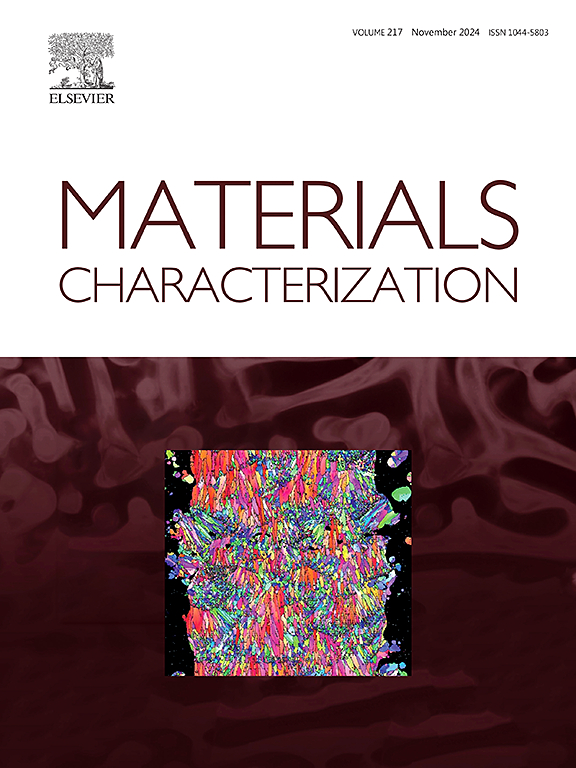Understanding the role of microstructure on creep anisotropy in additively manufactured IN718
IF 4.8
2区 材料科学
Q1 MATERIALS SCIENCE, CHARACTERIZATION & TESTING
引用次数: 0
Abstract
This study investigates the predominant influence of microstructural features resulting from the additive manufacturing process and subsequent heat treatment on the creep rupture behaviour of laser powder bed fusion additively manufactured Inconel 718 (LPBF-AM-IN718) with respect to different build orientations. Two build orientations were produced through an LPBF process followed by stress relief annealing at 980 °C (15 min). Subsequently, the heat treatment (HT) cycle involving solution treatment at 1080 °C followed by conventional double ageing treatment was employed. Detailed microstructural characterization was performed both along and normal to the build direction using SEM, EBSD, TEM and STEM-EDS, revealing the presence of precipitate-free zones adjacent to the grain boundaries. Creep characterization of the two differently oriented specimens in the temperature range of 625–675 °C and at 500–750 MPa indicate a superior creep resistance of vertical build (loading along the build direction) specimens compared to horizontal build (loading normal to the build direction) specimens. The correlation of heat-treated microstructures, creep deformation behaviour and comprehensive post-deformation microstructural characterization illustrates that damage accumulation occurs via grain boundary cavitation predominantly along the transverse grain boundaries and is rationalized to be the dominant softening mechanism in HB specimens. In contrast, the triple point cavitation leading to damage initiation and subsequent propagation was recognized as the damage mechanism in VB specimens. This study emphasizes that creep anisotropy in AM IN718 alloys is not solely due to a single microstructural feature; instead, it results from the complex interplay among various factors, including grain morphology, crystallographic texture and microsegregation.

求助全文
约1分钟内获得全文
求助全文
来源期刊

Materials Characterization
工程技术-材料科学:表征与测试
CiteScore
7.60
自引率
8.50%
发文量
746
审稿时长
36 days
期刊介绍:
Materials Characterization features original articles and state-of-the-art reviews on theoretical and practical aspects of the structure and behaviour of materials.
The Journal focuses on all characterization techniques, including all forms of microscopy (light, electron, acoustic, etc.,) and analysis (especially microanalysis and surface analytical techniques). Developments in both this wide range of techniques and their application to the quantification of the microstructure of materials are essential facets of the Journal.
The Journal provides the Materials Scientist/Engineer with up-to-date information on many types of materials with an underlying theme of explaining the behavior of materials using novel approaches. Materials covered by the journal include:
Metals & Alloys
Ceramics
Nanomaterials
Biomedical materials
Optical materials
Composites
Natural Materials.
 求助内容:
求助内容: 应助结果提醒方式:
应助结果提醒方式:


